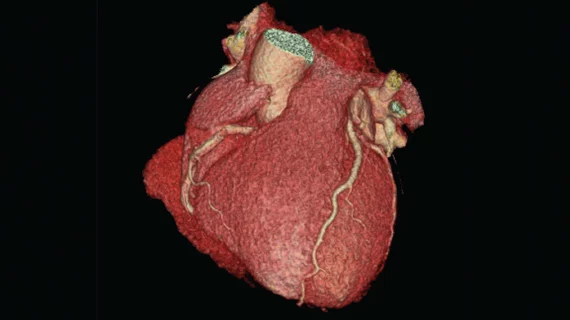Antibiotic prescriptions to prevent infective endocarditis (IE) decreased following a 2007 guideline update from the American Heart Association—even among high-risk patients for whom antibiotics were still recommended. Those patients showed an estimated 177 percent increase in IE incidence over the next several years, according to a new study in the Journal of the American College of Cardiology, a finding the authors said is “concerning” and fodder for additional investigation.
The 2007 AHA update advised antibiotic prophylaxis (AP) only for patients at high risk of IE undergoing invasive dental procedures. Previous recommendations suggested AP in moderate-risk patients as well.
To investigate the effects of these guidelines, researchers led by Martin H. Thornhill, MBBS, BDS, PhD, used the Truven Health MarketScan databases from May 2003 through August 2015 to characterize trends in antibiotic prophylaxis and IE incidence both before and after the new recommendations came out. The databases encompassed nearly 200 million enrollee years, including 1.26 million among patients considered high risk based on prior diagnosis or procedure codes, 11.7 million years among patients deemed at moderate risk and 185.5 million years among patients at low or unknown risk.
Unsurprisingly, the rates of AP prescribing fell by 64 percent among moderate-risk individuals in wake of the new guidelines—during which time IE incidence rose by a “barely significant” 75 percent in that group.
However, the 20 percent drop in AP prescribing for high-risk individuals was associated with a more robust 177 percent estimated increase in IE incidence. Among unknown/low-risk patients, there was a 52 percent decrease in AP prescribing but no significant increase in IE occurrence.
“Although these data do not establish a cause–effect relationship between AP reduction and IE increase, the fall in AP prescribing in those at high risk is of concern and, coupled with the borderline increase in IE incidence among those at moderate risk, warrants further investigation,” wrote Thornhill, with the School of Clinical Dentistry at the University of Sheffield in the United Kingdom, and colleagues.
The increases in IE incidence were calculated in relation to the observed trends before the AHA recommendation; the absolute rates of IE actually declined slightly in all three groups, but the rate of decrease was less—or lower than expected—following the AHA publication.
Overall, the findings seem to support the new recommendations, the authors noted. It appears high-risk individuals do benefit from antibiotics, as long as clinicians assess their risk properly and go through with the prescription recommendations. The decline in antibiotic prescriptions among high-risk patients suggests to Thornhill and colleagues that either dentists have a hard time separating high versus moderate risk, or simply don’t know about the current recommendations.
Also, the marginal increase in IE incidence among moderate-risk patients highlights that many in this category likely don’t benefit from AP, the authors noted, although it’s worth considering whether some patients in this category actually carry a higher risk.
“It does raise the possibility … that a small number of individuals currently considered at moderate risk, such as those with certain other predisposing comorbidities or specific cardiac anomalies, such as bicuspid aortic valve or mitral valve prolapse, could benefit from AP and highlights the need for a more detailed evaluation of risk among those currently considered at moderate risk,” they wrote.
The authors said their study is the first to examine the effects of the AHA guideline update on AP prescribing patterns as well as the subsequent incidence of infective endocarditis.
“If these 2 trends in AP and IE were proven to be linked in a cause and effect manner, these results would strike both fear and hope into the hearts of dedicated IE worriers—fear that some patients at high risk have been inadequately protected from IE due to lack of compliance with AP recommendations, and hope that there might finally be some indication that AP is actually effective in avoiding some cases of endocarditis,” wrote Ann F. Bolger, MD, a cardiologist with the University of California, San Francisco School of Medicine, in a related editorial.
But Bolger noted it’s impossible to determine cause and effect without knowing whether the IE cases were caused by streptococcal or nonstreptococcal organisms, only one of which can be targeted by antibiotics.
“Studies on changing IE incidence that incorporate prophylaxis-related practices and bacteriology will be the most useful in improving risk-based IE prevention practices in the future,” she wrote.

